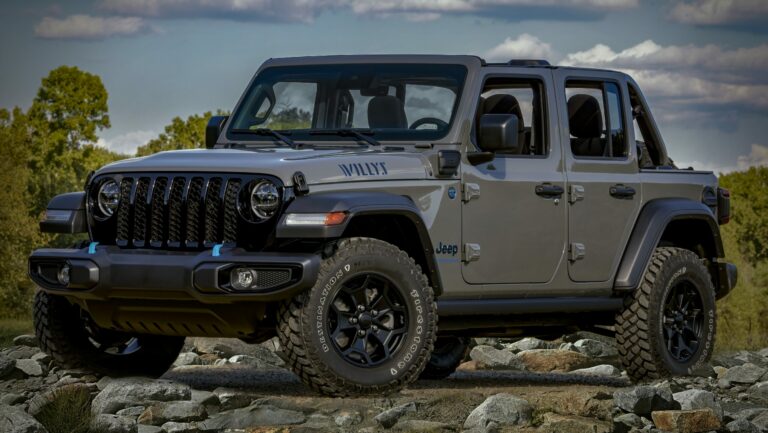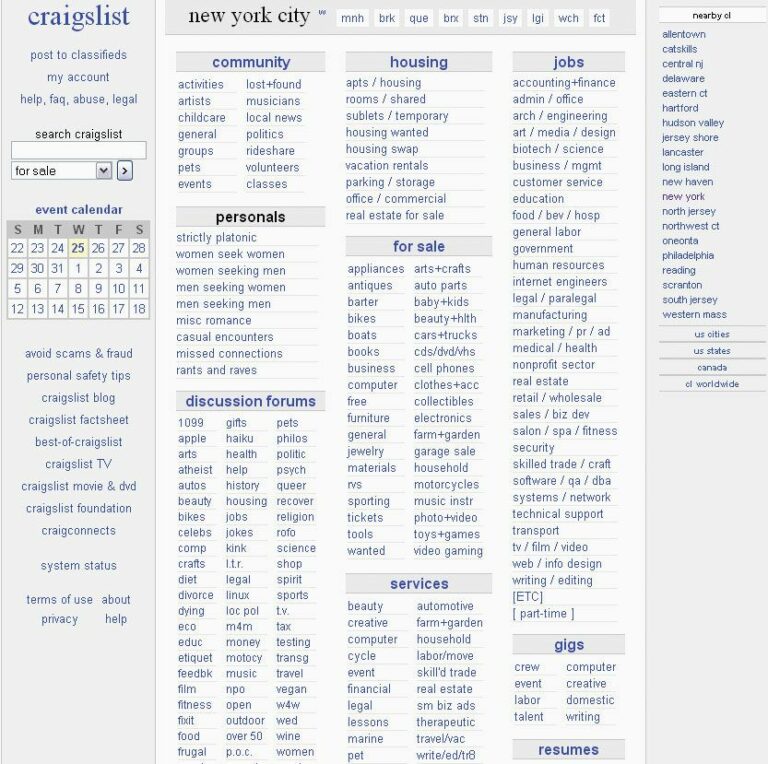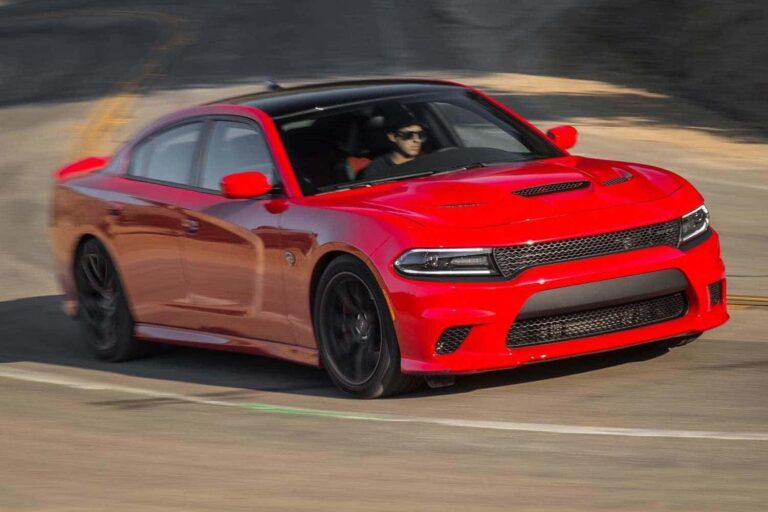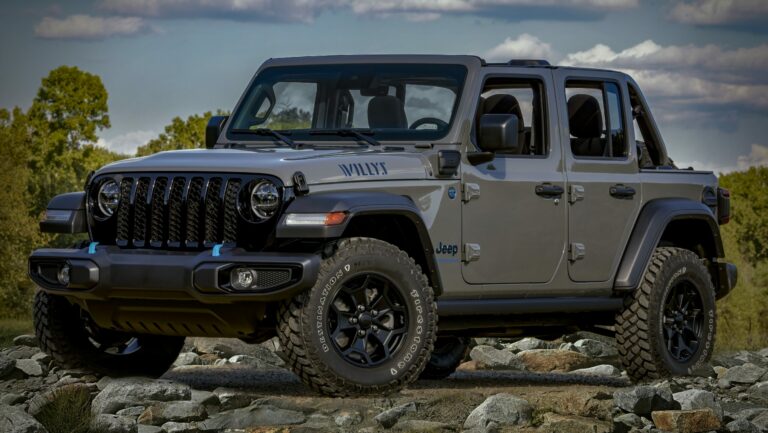1946 Willys Jeep CJ-2A For Sale: A Timeless Icon on the Market
1946 Willys Jeep CJ-2A For Sale: A Timeless Icon on the Market jeeps.truckstrend.com
Introduction: The Birth of a Civilian Legend
In the annals of automotive history, few vehicles command the enduring respect and affection reserved for the Willys Jeep. While its military predecessor, the MB/GPW, famously helped win World War II, it was the 1946 Willys Jeep CJ-2A that truly democratized the utility vehicle, bringing its rugged capability from the battlefield to the farm, the ranch, and the burgeoning American suburb. The "CJ" in its name stands for "Civilian Jeep," a testament to its intended purpose as a versatile workhorse and recreational vehicle for the post-war era.
1946 Willys Jeep CJ-2A For Sale: A Timeless Icon on the Market
The 1946 CJ-2A holds a special place as the first full-production civilian Jeep. It laid the groundwork for decades of Jeep models to come, establishing the brand’s reputation for durability, simplicity, and unparalleled off-road prowess. Today, finding a 1946 Willys Jeep CJ-2A for sale is more than just a transaction; it’s an opportunity to own a tangible piece of American ingenuity and a vehicle that shaped the automotive landscape. Whether you’re a seasoned collector, a restoration enthusiast, or simply someone yearning for a taste of vintage adventure, the CJ-2A offers a unique blend of history, charm, and functional appeal. This comprehensive guide will navigate the world of the 1946 Willys Jeep CJ-2A, from its historical significance to practical advice on buying, owning, and appreciating this iconic machine.
The Genesis of a Legend: Understanding the 1946 Willys CJ-2A
Following the immense success and demand for the military Jeep during WWII, Willys-Overland recognized the potential for a civilian variant. The CJ-2A, introduced in 1945 (with the vast majority produced in 1946), was their answer. While it shared much of its DNA with the MB, key modifications were made to suit civilian needs:
- Tailgate: A crucial addition for practicality, allowing easier loading and unloading of cargo.
- Larger Headlights: Mounted lower and larger for improved civilian road use.
- Side-Mounted Spare Tire: Relocated from the rear for better access to the tailgate.
- "Go-Devil" L-134 Engine: The robust 2.2L (134 cu in) inline-four engine, known for its reliability and torque, remained the heart of the CJ-2A.
- T-90 Transmission & Spicer 18 Transfer Case: A sturdy three-speed manual transmission paired with a two-speed transfer case, offering both high-range two-wheel drive (rear-wheel drive) and low-range four-wheel drive.
- Full-Floating Rear Axle: A more robust design for heavy-duty work.
- Power Take-Off (PTO) Options: Many CJ-2As were factory-equipped or could be fitted with PTO units, allowing them to power farm implements, generators, and even sawmill equipment, truly making them a "universal" vehicle.
- Ventilated Windshield & Wiper System: Basic but functional for civilian use.

These features cemented the CJ-2A’s reputation as a versatile and indispensable tool for farmers, construction workers, and adventurers alike, marking the beginning of the Jeep brand’s civilian dominance.
Why Own a 1946 Willys CJ-2A? Benefits and Appeal
The allure of the 1946 Willys CJ-2A extends far beyond its utilitarian roots. Owning one offers a unique blend of benefits:
- Historical Significance: You’re not just buying a vehicle; you’re acquiring a tangible piece of American history, representing the post-war boom and the transition from military production to civilian innovation.
- Timeless, Iconic Design: The CJ-2A’s silhouette is instantly recognizable worldwide. Its rugged, no-nonsense aesthetic is a timeless classic that never goes out of style.
- Simplicity and Durability: Built with wartime robustness, the CJ-2A is remarkably simple mechanically. Its "Go-Devil" engine and sturdy drivetrain are known for their longevity, and with basic tools, many repairs can be handled by the owner. This makes it an ideal classic for those who enjoy working on their vehicles.
- Vibrant Community: The Willys Jeep community is active, passionate, and incredibly supportive. From online forums to local clubs and national events, you’ll find a wealth of knowledge, shared experiences, and camaraderie.
- Investment Potential: Well-maintained, original, or professionally restored CJ-2As have shown a steady appreciation in value over time. While not a guaranteed investment, it’s a classic that holds its value and can be enjoyed while it potentially gains worth.
- Unmatched Versatility: Whether it’s for off-road trails, weekend cruises, local parades, or even light utility tasks, the CJ-2A is surprisingly adaptable. Its original purpose as a "universal" vehicle still rings true.
- Pure Driving Experience: In an age of complex electronics and driving aids, the CJ-2A offers a raw, unfiltered connection to the road (or lack thereof). It’s a driving experience that harks back to a simpler time.
Navigating the Market: How to Find Your 1946 Willys CJ-2A For Sale
Finding the right 1946 Willys CJ-2A requires patience and knowing where to look. Here are the primary avenues:
- Online Marketplaces:
- eBay Motors: A wide variety of conditions, from project vehicles to restored examples.
- Hemmings Motor News: A reputable source for classic and collector cars, often featuring higher-quality listings.
- Bring a Trailer (BaT): Known for curated auctions of desirable classics, often with detailed photos and enthusiastic comment sections. Prices can be competitive.
- ClassicCars.com / AutoTrader Classics: Broader platforms for classic vehicle listings.
- Facebook Marketplace / Specific Facebook Groups: Many dedicated Willys Jeep buy/sell groups exist and can be excellent sources for finding local listings or connecting with enthusiasts.
- Specialized Dealerships: Classic car dealerships that specialize in vintage 4x4s or military vehicles often have CJ-2As in stock, usually at a premium but often with pre-inspection and sometimes warranties.
- Auctions: Live and online classic car auctions (e.g., Mecum, Barrett-Jackson, local auction houses) can be a source, but require quick decision-making and often come with buyer’s premiums.
- Willys Jeep Forums & Clubs: Members of forums like The CJ-2A Page Forum or local Willys/Jeep clubs often list vehicles for sale, providing a direct connection to knowledgeable sellers.
- Word of Mouth: Let friends, family, and local mechanics know you’re looking. Sometimes the best finds come from unexpected sources.
When searching, use specific terms like "1946 Willys CJ-2A," "Willys Civilian Jeep," or "Vintage Willys Jeep." Be prepared to travel for the right vehicle.
What to Look For: A Buyer’s Inspection Guide
Before committing to a purchase, a thorough inspection is paramount. Even if you’re not a mechanic, knowing what to look for can save you significant time and money. Consider hiring a specialist for a pre-purchase inspection (PPI) if possible.
- Frame Integrity: This is the backbone. Look for rust, especially near spring hangers, body mounts, and crossmembers. Check for cracks, bent sections, or signs of shoddy welding/repairs. A solid frame is crucial.
- Body Condition:
- Rust: Common areas include floorboards (especially under the driver’s feet), hat channels (under the floor), fenders (front and rear), cowl, battery tray, and the lower sections of the body tub and tailgate. Surface rust is manageable; widespread rot is costly.
- Dents and Damage: Minor dents are common; look for evidence of major collision repair.
- Originality: Are the panels original or reproduction? While reproductions are available, original panels often indicate a less-abused vehicle.
- Engine (Willys "Go-Devil" L-134):
- Leaks: Oil, coolant, fuel. Minor weeping is common; significant leaks indicate problems.
- Smoke: Blue smoke (oil burning), white smoke (coolant/head gasket), black smoke (rich fuel mixture).
- Noises: Knocks, taps, or unusual sounds can indicate internal wear.
- Compression: A compression test is ideal to assess engine health.
- Starting: Does it start easily, hot or cold?
- Drivetrain (T-90 Transmission & Spicer 18 Transfer Case):
- Shifting: Does it shift smoothly through all gears (including reverse)? Listen for grinding or clunking.
- 4WD Engagement: Does the transfer case engage both high and low range 4WD smoothly?
- Axles: Check for leaks at the differential covers and wheel ends. Listen for howling or clunking noises during a test drive.
- Electrical System:
- 6-Volt vs. 12-Volt: Original CJ-2As were 6-volt. Many have been converted to 12-volt for easier starting and accessory compatibility. Understand which system is present and ensure all lights, gauges, and the starter motor function correctly. Check wiring for frayed insulation or amateur repairs.
- Brakes & Steering:
- Brakes: Test pedal feel (should be firm, not spongy), stopping power, and if it pulls to one side. Check for leaks at wheel cylinders and master cylinder.
- Steering: Check for excessive play in the steering wheel. Listen for groans or binding.
- Originality vs. Restoration Quality: Decide what’s important to you. An untouched original will have patina but might need mechanical work. A restored vehicle should have documented work; inspect the quality of paint, bodywork, and mechanical overhauls. Check for matching numbers on the engine block and frame VIN if originality is a priority.
- Documentation: A clear title is essential. Service records, restoration photos, and previous ownership history add significant value and peace of mind.
Understanding the Price Spectrum: Factors Influencing Value
The price of a 1946 Willys CJ-2A for sale can vary dramatically, ranging from a few thousand dollars for a parts vehicle to well over $50,000 for a concours-level restoration. Several factors influence its market value:
| Condition Category | Description | Estimated Price Range (USD) | Key Characteristics |
|---|---|---|---|
| Concours/Show | Flawless, professionally restored to original specifications or better. Museum quality. | $30,000 – $60,000+ | Perfect paint, immaculate engine bay, correct parts, fully functional, often trailered to shows. |
| Excellent Driver | High-quality restoration or exceptionally well-preserved original. Ready to drive and show proudly. | $20,000 – $35,000 | Very good paint, solid frame/body, reliable mechanics, minor imperfections acceptable. |
| Good Driver | Solid, well-maintained, largely original or older restoration. Functional and presentable for regular use. | $12,000 – $22,000 | Decent paint, some wear and tear, mechanically sound but might need minor work, minimal rust. |
| Fair/Project | Runs and drives but needs significant cosmetic and/or mechanical work. Good base for restoration. | $5,000 – $15,000 | Visible rust, worn paint, some non-functioning components, engine/drivetrain may need overhaul. |
| Parts Vehicle | Non-running, heavily rusted, incomplete, or severely damaged. Primarily for parts salvage. | $1,000 – $4,000 | Extensive damage, missing major components, frame integrity issues, typically not roadworthy without major investment. |
Disclaimer: Prices are estimates and can fluctuate significantly based on market demand, geographic location, specific features (like PTO units, original canvas tops), and the presence of rare options or accessories.
Challenges and Solutions for the CJ-2A Owner
Owning a vintage vehicle like the CJ-2A comes with its own set of considerations, but most challenges have straightforward solutions:
- Parts Availability: Generally, mechanical parts for the CJ-2A are readily available through specialized vendors (e.g., Kaiser Willys Auto Parts, Walck’s 4×4) and online marketplaces. Body panels are also reproduced.
- 6-Volt System: The original 6-volt electrical system can be a bit finicky, especially in cold weather. Many owners opt for a 12-volt conversion, which simplifies starting and allows for modern accessories. This is a common and relatively easy modification.
- Road Manners: The CJ-2A is a product of its time. It’s slow, noisy, has basic suspension, and lacks power steering or brakes. It’s not suited for highway speeds or long-distance travel. Solution: Embrace its limitations. Enjoy it on back roads, for local errands, and off-road adventures.
- Maintenance: While simple, the CJ-2A requires regular maintenance. Learning basic mechanics is highly recommended. Solution: Join a Willys club, invest in a good service manual, and don’t be afraid to get your hands dirty.
- Rust: Rust is an ongoing battle, especially if the vehicle is exposed to the elements. Solution: Store it indoors, address rust spots promptly, and consider rustproofing.
- Safety: Lacks modern safety features (airbags, crumple zones, seatbelts in many cases). Solution: Drive defensively, wear seatbelts (if installed), and avoid high-speed roads.
Practical Advice and Actionable Insights
- Set a Realistic Budget: Not just for the purchase price, but also for potential immediate repairs, registration, insurance, and ongoing maintenance.
- Join a Community: Before or after buying, connect with Willys Jeep clubs and online forums. The collective knowledge is invaluable.
- Don’t Rush: Take your time to find the right vehicle. A thorough search will pay off.
- Get a Pre-Purchase Inspection (PPI): If you’re not an expert, hire one. A specialist familiar with vintage Jeeps can spot issues you might miss.
- Factor in Shipping: If buying out of state, get quotes for enclosed transport.
- Learn Basic Mechanics: The CJ-2A is a fantastic vehicle to learn on. Its simplicity makes it approachable for beginners.
- Drive it! While some are museum pieces, the CJ-2A was built to be used. Enjoy the unique driving experience and the attention it draws.
Conclusion: The Enduring Legacy of the Civilian Jeep
The 1946 Willys Jeep CJ-2A is far more than just an old vehicle; it’s a living piece of history, a testament to American post-war resilience, and a symbol of rugged individualism. Its charm lies in its simplicity, its robust utility, and its undeniable connection to an era when vehicles were built to last and to serve. Whether meticulously restored to factory specifications or sporting the honest patina of decades of work and adventure, each CJ-2A tells a unique story.
For those seeking a 1946 Willys Jeep CJ-2A for sale, the journey of acquisition is just the beginning. The true reward comes in the ownership—the joy of driving a classic, the satisfaction of maintaining a piece of history, and the camaraderie found within the passionate Willys community. Owning a CJ-2A is an invitation to slow down, appreciate the journey, and connect with the raw, unfiltered essence of motoring. It’s an investment not just in a vehicle, but in an experience that truly stands the test of time.
Frequently Asked Questions (FAQ) about the 1946 Willys Jeep CJ-2A
Q1: Is a 1946 Willys CJ-2A good for daily driving?
A1: Generally, no. The CJ-2A is slow, lacks modern safety features, has rudimentary suspension, and is noisy at speed. It’s best suited for short trips, local errands, parades, off-road excursions, and weekend fun, not highway commuting or daily driving in modern traffic.
Q2: Are parts readily available for the 1946 Willys CJ-2A?
A2: Yes, remarkably so! Due to its popularity and the robust aftermarket, most mechanical parts (engine components, drivetrain, brakes, steering) are available from specialized vendors. Many body panels are also reproduced.
Q3: What’s the main difference between a CJ-2A and a military Jeep (MB/GPW)?
A3: While very similar, the CJ-2A was designed for civilian use. Key differences include a tailgate, larger and lower headlights, a side-mounted spare tire, a civilian-style fuel filler, and typically a 6-volt electrical system (MBs were 24-volt). The MB/GPW also lacked the PTO options common on the CJ-2A.
Q4: Should I convert my 6-volt CJ-2A to 12-volt?
A4: This is a common modification. A 12-volt conversion can improve starting reliability, allow for modern accessories (radio, phone charger), and make finding replacement electrical components easier. If originality is paramount, stick with 6-volt, but for practicality, 12-volt is often preferred.
Q5: How much maintenance does a 1946 Willys CJ-2A require?
A5: It requires regular maintenance, but its simplicity makes it manageable for most owners. Basic tasks like oil changes, greasing, checking fluids, and addressing minor issues promptly are key. It’s a great vehicle to learn basic mechanics on.
Q6: Can a 1946 Willys CJ-2A still go off-road?
A6: Absolutely! Its light weight, short wheelbase, and robust 4×4 system make it surprisingly capable off-road, even by modern standards. However, its age means you should avoid extreme rock crawling or high-speed rough terrain.
Q7: What is the "Go-Devil" engine?
A7: The "Go-Devil" L-134 is the nickname for the Willys 2.2-liter (134 cubic inch) inline-four flathead engine. It was renowned for its incredible durability, simplicity, and low-end torque, making it ideal for the military Jeep and later the CJ-2A. It’s a very robust and reliable powerplant.




